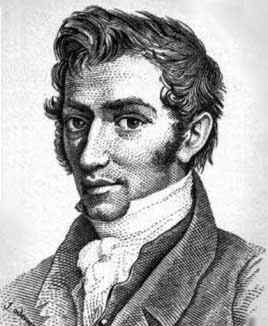Adolphe Quetelet (pronounced Ket-eh-lay) was a Flemish Scientist who was the first to use the normal curve.
Born in Ghent, France in1796, Adolphe’s father died when he was just seven years old. At the age of 17, after his own schooling at Lyceum in Ghent where he excelled in mathematics, he took a job teaching mathematics at a school in 1813 to support his family. He was appointed a mathematics instructor at the College in Ghent in 1815 at the age of 19.
While at the College of Ghent, Adolphe was influenced by Garnier who encouraged Quetelet’s deeper studies in mathematics. He went on to earn a doctorate from the University of Ghent in 1819 with a dissertation on conic sections. After graduating and at the age of 23, he was appointed chair of elementary mathematics at the Athenaeum in Brussels. While he taught mathematics, Quetelet had a strong interest in astrology and lobbied for an observatory in Brussels. While visiting Paris on a fact-finding mission for the observatory, Quetelet learned the importance of statistical methods in astronomy.
As a result of his “zeal for statistics,” Quetelet identified society as a topic and studied and wrote papers on social statistics and in the course of that work was the first to use the normal curve/distribution and used what astronomers knew as the error law or bell curve on human populations. He also introduced the height/weight measure that we know today as the body mass index (BMI). He used the idea of an average as a central value. He collected statistics on crime and mortality and improved census taking for the government.

In 1855 Quetelet suffered a moderate stroke and never fully recovered suffering from a poor memory which negatively impacted his writings. Quetelet died in 1874.
Sources:
https://mathshistory.st-andrews.ac.uk/Biographies/Quetelet/
https://www.famousscientists.org/adolphe-quetelet/
Compiled by Tracy Lyn Lause







